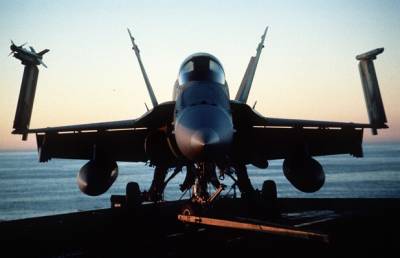Discovery Turbo brings a new season of THE AVIATORS
Discovery Turbo brings a new season of THE AVIATORS; the stories of the flight by those who take to the skies - the pilots. The series introduces aviation experts as they cover a broad range of topics designed to keep speed enthusiasts informed and entertained. Appealing to everyone who’s fascinated with the wonder of flight, THE AVIATORS covers everything from new aircraft designs to the latest GPS technologies, accident and safety awareness, airline profiles and remote fly-in getaways.
Starting tonight at 10 pm, Discovery Turbo’s series THE AVIATORS promises to take viewers behind the scenes to showcase how airline pilots train, how planes are built and how air traffic control works. THE AVIATORS explores aviation business, showcases disparate aviation products, provides safety tips for private and recreational pilots and shares career tips for professional pilots.
Presenting aviation icon locations like Oshkosh Airshow, Sun N Fun Airshow, Wichita, AirVenture; also featuring what it's like to fly in the Goodyear Blimp and how to land an airliner. Get mesmerized by interesting people, the latest aircraft, the coolest technology and the best fly-in destinations.
THE AVIATORS showcases the stories of some of history's most noted aerial combatants, from World War I ace "The Red Baron" to pilots in more recent air battles.
Interesting aviation trivia from the series:
- Oshkosh, Wisconsin hosts one of the biggest air shows on Earth - AirVenture. Spread over 1400 acres, exhibiting 10,000 airplanes, it attracts more than 500,000 people and 800 exhibitors. Started in 1953, it has grown to be one of the world’s largest aviation events and the world’s largest fly-in.
- Boeing C-17 Globemaster with its first flight in September 1991, it is one of the US Air Force’s newest tactical airlifters. Powered by the same engines as the Boeing 757, the C-17 can be used to carry troops, supplies and even a 70 ton M-1 Abrams tank.
- The de Havilland Tiger Moth biplane is an example of one of those early aircraft that is still seen around the world today. With a top speed lower than that of most cars, just 109 miles per hour, and a range nearly half that of a Cessna 172, the Tiger Moth was originally designed as a trainer and was built in the thousands around the world. This was developed in the 1930s and used to train thousands of pilots for things like World War II.
- The C5M Supergalaxy is a cargo-moving giant and can go anywhere. At maximum takeoff weight, the minimum runway length is just 8300 feet. For landing, it’s even less at a mere 4900 feet. Featuring full width cargo doors at the nose and tail, the C5M is the largest aircraft in the US fleet. Six stories high with a maximum takeoff weight equal to 56 elephants.
- In 1911, a small town Kansas farmer named Clyde Cessna built his own airplane. Little did he know that this would lead to the birth of the most prolific aircraft manufacturing brand of all time. While primarily a single engine aircraft company, Cessna has a vast product line ranging from the single engine 172, to the large twin engine Citation 10, the fastest business jet in the world.
- Air Traffic Control - Worldwide air traffic is controlled by two types of facilities; radar stations known as en route or area control centers monitor the majority of air traffic while airport towers monitor traffic within a control zone around an airport.
- The Toronto tower is the first tower in the world to use an entirely paperless touch screen control system for air traffic control. Traditionally towers and area control centers use a combination of paper flight progress trips and computer software.
- Aerobatic Aircrafts - The Yak-55 is a thoroughbred aerobatic aircraft capable of tumbling and other complex aerobatic maneuvers. The Yak-18T on the other hand is a four seat aerobatic capable passenger aircraft. The Yak-18T’s 360 horsepower redial engine can propel the aircraft to speeds of over 180 miles per hour.
- Light-sport is one of the fastest growing segments of the aviation today. SeaReyLSX is a great example of amphibious light-sport. It can cruise at about 80 to 90 miles per hour and it sips at gas at only five and a half gallons per hour and about four and a half hours of range. The interesting feature of this aircraft is the folding wings which are 30 feet wide, but can be folded to become ten feet.


















Share
Facebook
YouTube
Tweet
Twitter
LinkedIn